- Spring Pruning of Shrubs
- When to Prune Shrubs in Spring
- Why Prune Shrubs in Spring
- How to Prune Shrubs in Spring
- Pruning Tips
- Importance of Pruning
- When to Prune
- Tools for Pruning
- 1. Pruning Shears
- 2. Loppers
- 3. Pruning Saw
- 4. Hedge Trimmers
- 5. Gloves
- 6. Safety Glasses
- How to Prune
- Pruning Techniques
- 1. Heading and Thinning
- 2. Timing
- 3. Tools
- 4. Techniques for Specific Shrubs
- 5. Precautions
- Pruning for Different Types of Shrubs
- 1. Deciduous Shrubs:
- 2. Evergreen Shrubs:
- 3. Flowering Shrubs:
- 4. Hedge Shrubs:
- Benefits of Spring Pruning
- Question-answer:
- When is the best time to prune shrubs in the spring?
- How often should I prune my shrubs?
- What tools do I need for spring pruning of shrubs?
- How much should I prune off my shrubs?
- Why is spring pruning important for shrubs?
- Can I prune flowering shrubs in the spring?
- Is there anything I should avoid when pruning shrubs in the spring?
- Video: How to Prune, Trim & Shape Your Bushes & Shrubs
Spring is the ideal time to prune your shrubs and bushes. Pruning helps to maintain the health and shape of the plants, while also promoting new growth and flowering. By cutting back dead or diseased branches, you can prevent the spread of pests and diseases to the rest of the plant.
But how do you know when and how to prune your shrubs? It’s important to identify the specific needs of each type of shrub, as different species have different growth patterns and requirements. Some shrubs, like lilacs and forsythias, should be pruned immediately after they finish flowering in the spring. Others, like roses and hydrangeas, benefit from being pruned in early spring before new growth begins.
When pruning your shrubs, it’s important to use the right tools and techniques. Sharp, clean pruning shears or loppers should be used to make clean cuts and reduce the risk of disease. Start by removing any dead or damaged branches. Then, thin out the plant by removing branches that are crossing or rubbing against each other. Finally, shape the shrub by cutting back the remaining branches to the desired length and shape.
So why should you bother to trim your bushes every spring? Pruning not only improves the appearance of your landscape, but also encourages healthy growth and flowering. By removing dead or overgrown branches, you allow more air and sunlight to reach the plant, promoting better overall health. Pruning also helps to control the size of the shrub, preventing it from becoming overgrown or blocking walkways.
Spring Pruning of Shrubs
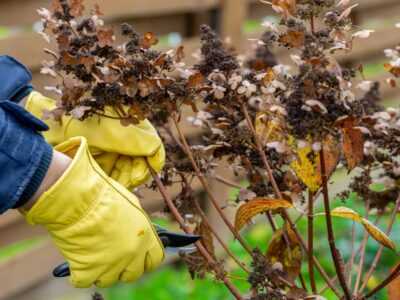
Pruning shrubs in the spring is a crucial step in maintaining their health, shape, and overall appearance. By removing dead or damaged branches, as well as controlling the size and shape of the shrub, pruning helps promote healthy growth and blooming.
When to Prune Shrubs in Spring
The timing of spring pruning can vary depending on the specific type of shrub. However, as a general rule, it is best to prune shrubs before new growth begins. This is typically done in late winter or early spring, before buds start to open. Pruning too late in the spring can interfere with the flowering and growth of the shrub.
Why Prune Shrubs in Spring
There are several reasons why spring pruning is important for shrubs:
- Promotes healthy growth: By removing dead, diseased, or damaged branches, you allow the shrub to focus its energy on healthy growth.
- Controls size and shape: Pruning helps maintain the desired size and shape of the shrub, ensuring it fits well into your landscape.
- Enhances blooming: By removing old flowers and shaping the shrub, you can encourage better blooming and a more attractive display.
- Increases air circulation: Pruning helps create better air circulation within the shrub, reducing the risk of disease and pest infestation.
How to Prune Shrubs in Spring
Follow these steps to prune your shrubs in spring:
- Assess the shrub: Look for dead, diseased, or damaged branches that need to be removed. Also, consider the overall shape and size of the shrub.
- Choose the right tools: Use sharp and clean pruning shears or loppers to make clean cuts and reduce the risk of spreading diseases.
- Start pruning: Begin by removing any dead or diseased branches. Then, prune back any overgrown or misplaced branches to improve the shrub’s shape.
- Prune for size: If the shrub has become too large, consider removing some of the older branches from the base to control its size.
- Finish with shaping: Carefully shape the shrub by removing any branches that are crossing or rubbing against each other. Aim for an overall balanced and natural appearance.
Pruning Tips
- Know your shrub: Each type of shrub may have specific pruning requirements. Research the specific needs of your shrub to ensure you’re pruning it correctly.
- Don’t remove too much: Avoid excessive pruning, as it can stress the shrub and inhibit its growth. Stick to removing only dead, damaged, or overgrown branches.
- Take your time: Pruning is a gradual process. Take breaks as needed and step back occasionally to evaluate your progress and make sure you’re achieving the desired shape.
- Clean your tools: After pruning each shrub, clean your tools to prevent the spread of diseases. Wipe them down with a disinfectant or bleach solution and let them dry before using them again.
By following these guidelines, you can ensure that your shrubs thrive and provide beauty to your landscape throughout the growing season. Happy pruning!
Importance of Pruning
Pruning is an essential practice in maintaining the health and aesthetic appeal of shrubs. It involves removing select branches or stems from a plant to improve its overall structure, promote growth, and ensure longevity.
Promotes Growth and Flowering: By pruning your shrubs, you encourage the growth of new shoots and stimulate flowering. Pruning helps to remove dead or damaged branches, allowing the plant to allocate more energy to healthy parts, resulting in enhanced growth and flowering.
Enhances Air Circulation: Dense growth can create a barrier for air circulation, leading to increased humidity and potential fungal infections. Pruning opens up the shrub, allowing air to reach all parts, reducing the risk of diseases and promoting healthy growth.
Controls Size and Shape: Regular pruning helps control the size and shape of your shrubs, preventing them from becoming overgrown and unsightly. By removing excessive growth and shaping the plant, you can maintain a tidy and well-maintained appearance in your garden.
Encourages Fruit Production: If you have fruit-bearing shrubs, proper pruning can significantly improve fruit production. By eliminating unnecessary branches, you allow more sunlight to reach the inner parts of the shrub, leading to better fruit development and ripening.
Remedies Disease and Pest Issues: Pruning allows you to identify and remove diseased or pest-infested branches, preventing the spread of infections or infestations to the healthy parts of the shrub. Regular pruning helps you maintain a healthy plant and saves it from potential damage.
Creates Aesthetic Appeal: Pruning enables you to shape your shrubs according to your desired aesthetic. Whether you prefer a formal, manicured look or a more natural, flowing style, pruning allows you to sculpt and direct growth to create visually pleasing results.
In conclusion, pruning plays a crucial role in the maintenance of shrubs by promoting growth, enhancing air circulation, controlling size and shape, encouraging fruit production, remedying disease and pest issues, and creating aesthetic appeal. Regular pruning ensures the health and longevity of your shrubs, allowing you to enjoy a beautiful and thriving garden.
When to Prune
Pruning shrubs at the right time is essential for their overall health and growth. The optimal time to prune your bushes depends on the specific type of shrub you have. In general, spring is the most common time to prune shrubs, but there are exceptions.
Deciduous Shrubs:
– Prune in late winter or early spring before new growth begins.
– Wait until after the threat of frost has passed.
– For flowering shrubs, prune immediately after they finish blooming to avoid cutting off next year’s flower buds.
– Remove dead, damaged, or diseased branches at any time of the year.
Evergreen Shrubs:
– Spring is also a good time to prune evergreen shrubs, but they can tolerate pruning at other times of the year as well.
– Avoid pruning in late fall or winter, as new growth may be damaged by cold temperatures.
– Shape the shrub by thinning it out and cutting back any stray branches.
Most shrubs benefit from yearly pruning to maintain their shape and promote healthy growth. Regular pruning encourages the development of new shoots and flowers, and helps improve air circulation and sunlight penetration, which can prevent diseases.
Tools for Pruning
When it comes to pruning your shrubs, having the right tools can make the job much easier and more effective. Here are some essential tools that you’ll need to have on hand:
1. Pruning Shears

Pruning shears, also known as hand pruners or secateurs, are the most basic and important tool for pruning. These shears are designed to cut through small branches and stems with precision. They come in different sizes and styles, so choose a pair that feels comfortable in your hand and suits the size of the branches you’ll be pruning.
2. Loppers
Loppers are larger and more heavy-duty than pruning shears. They have long handles and a bypass blade or anvil blade design that allows you to cut through thicker branches. Loppers are ideal for pruning shrubs with branches up to 2 inches thick.
3. Pruning Saw
A pruning saw is a useful tool for cutting through large branches that are too thick for loppers or pruning shears. Pruning saws have a curved or straight blade with large teeth that make cutting through wood easier. Look for a pruning saw with a comfortable handle and a blade that suits the size of the branches you’ll be working with.
4. Hedge Trimmers
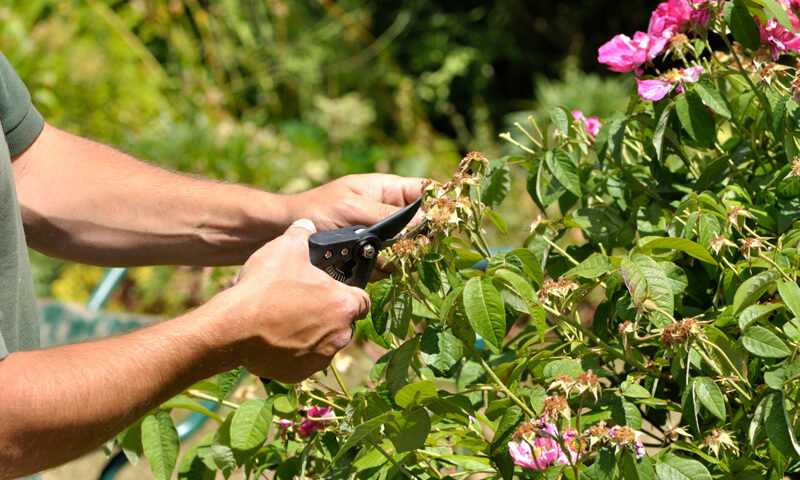
If you have hedges or shrubs that need shaping, a set of hedge trimmers will come in handy. Hedge trimmers have long, straight blades that allow you to trim bushes quickly and evenly. Look for hedge trimmers with adjustable blades and a comfortable grip.
5. Gloves
Don’t forget to protect your hands while pruning. A good pair of gloves will protect you from cuts, scratches, and blisters. Look for gloves that are made of durable and flexible material, such as leather or a synthetic blend.
6. Safety Glasses
When using tools like pruning shears, loppers, or a pruning saw, it’s important to protect your eyes from flying debris. Wear a pair of safety glasses to prevent any potential eye injuries.
Having these tools in your gardening arsenal will set you up for success when it comes to spring pruning. Make sure to clean and maintain your tools regularly to keep them in good working condition.
How to Prune
Pruning shrubs is an important part of their care and maintenance. Proper pruning can help improve the health and appearance of your bushes. Here are some steps to follow when pruning your shrubs:
- Identify the right time: The timing of pruning can vary depending on the type of shrub you have. Generally, it is best to prune spring-blooming shrubs right after they finish flowering. For summer-blooming shrubs, pruning in late winter or early spring is recommended.
- Gather the right tools: Before you start pruning, make sure you have the necessary tools, such as sharp hand pruners, loppers, and pruning saws. Having clean and sharp tools will make the pruning process easier and more effective.
- Remove dead or damaged branches: Begin by inspecting the shrub for any dead or damaged branches. Use your pruning tools to remove these branches, making clean cuts just outside the branch collar.
- Thin out crowded areas: If your shrub is starting to look overgrown or crowded, thinning out some of the branches can help improve airflow and sunlight penetration. Select the oldest and weakest branches and remove them at the base of the shrub.
- Control the size and shape: Pruning can also be done to control the size and shape of the shrub. If you want to maintain a specific size or shape, selectively prune branches to achieve the desired look. Be careful not to remove more than one-third of the shrub’s overall growth in a single pruning session.
- Pay attention to proper technique: When making cuts, use the appropriate technique for the type of branch you are pruning. For smaller branches, make cuts just above a bud or lateral branch. For larger branches, use the three-cut technique to minimize damage to the bark.
- Clean up: Once you have finished pruning, be sure to clean up any debris and dispose of it properly. This will help prevent the spread of diseases and pests.
Pruning is an ongoing process, and regular maintenance is key to keeping your shrubs healthy. By following these steps and pruning your shrubs at the right time, you can promote healthy growth and maintain a beautiful landscape.
Pruning Techniques
1. Heading and Thinning
Heading and thinning are two common pruning techniques used to shape and control the growth of shrubs.
- Heading: Heading involves cutting back branches to a certain point, such as a bud or node. This technique is used to encourage bushier growth and is often done to shape shrubs into a desired form.
- Thinning: Thinning involves selectively removing certain branches to open up the interior of the shrub and improve air circulation. This technique helps reduce the risk of disease and can also improve the overall appearance of the shrub.
2. Timing
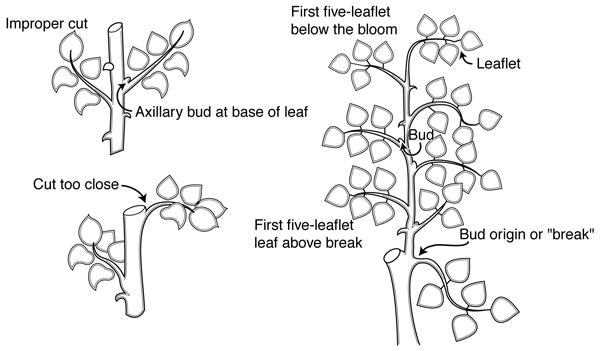
Timing is crucial when it comes to pruning shrubs. It is generally recommended to prune spring-blooming shrubs after they have finished flowering. This allows them to set buds for the following year. On the other hand, summer-blooming shrubs can be pruned in late winter or early spring before they start actively growing.
3. Tools
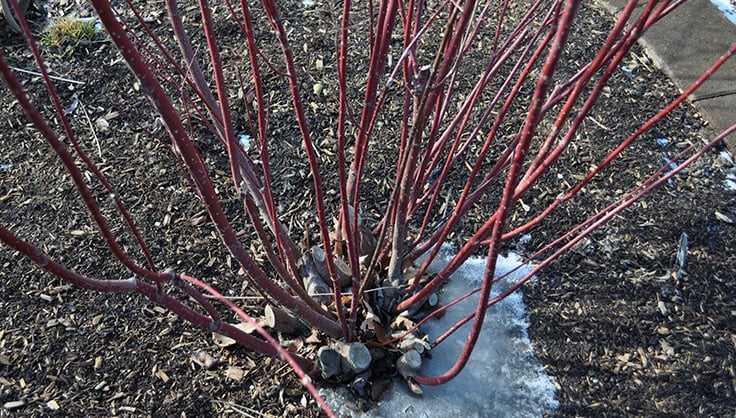
Using the right tools is important for effective pruning. Some common tools used for pruning shrubs include:
- Hand pruners: These are useful for cutting small branches and stems up to 1/2 inch in diameter.
- Loppers: Loppers have long handles and can cut branches up to 2 inches in diameter. They provide more leverage and reach than hand pruners.
- Pruning saw: A pruning saw is best for cutting thicker branches that cannot be easily handled by pruners or loppers.
4. Techniques for Specific Shrubs
Some shrubs may require specific pruning techniques to maintain their health and appearance. Here are a few examples:
- Roses: Prune roses in early spring before new growth begins. Remove dead or damaged branches and shape the plant to promote better air circulation.
- Hedges: Trim hedges regularly throughout the growing season to maintain a neat and tidy appearance. Use hedge trimmers or hand pruners to shape the hedge as desired.
- Evergreens: Prune evergreen shrubs in early spring before new growth begins. Remove any dead or diseased branches and shape the plant to maintain its desired form.
5. Precautions
When pruning shrubs, it is important to take certain precautions:
- Always wear protective gloves and eyewear to prevent injuries from thorns or flying debris.
- Make clean cuts to minimize damage and promote quick healing.
- Dispose of pruned branches properly to prevent the spread of disease.
- Consult a professional or reference pruning guides for specific techniques for different types of shrubs.
Pruning for Different Types of Shrubs
When it comes to pruning shrubs, it’s important to consider the specific type of shrub you have. Different shrubs have different growth habits and pruning requirements. Here are some guidelines for pruning common types of shrubs:
1. Deciduous Shrubs:
Deciduous shrubs are those that lose their leaves in the winter. These shrubs should be pruned during their dormant season, which is usually late winter or early spring. Pruning during dormancy allows the shrub to focus its energy on new growth in the spring.
- Remove any dead, damaged, or diseased branches.
- Thin out the shrub by removing about one-third of the oldest branches at the base.
- Prune back long, leggy branches to maintain a compact shape.
- Encourage new growth by cutting just above a bud or lateral branch.
2. Evergreen Shrubs:
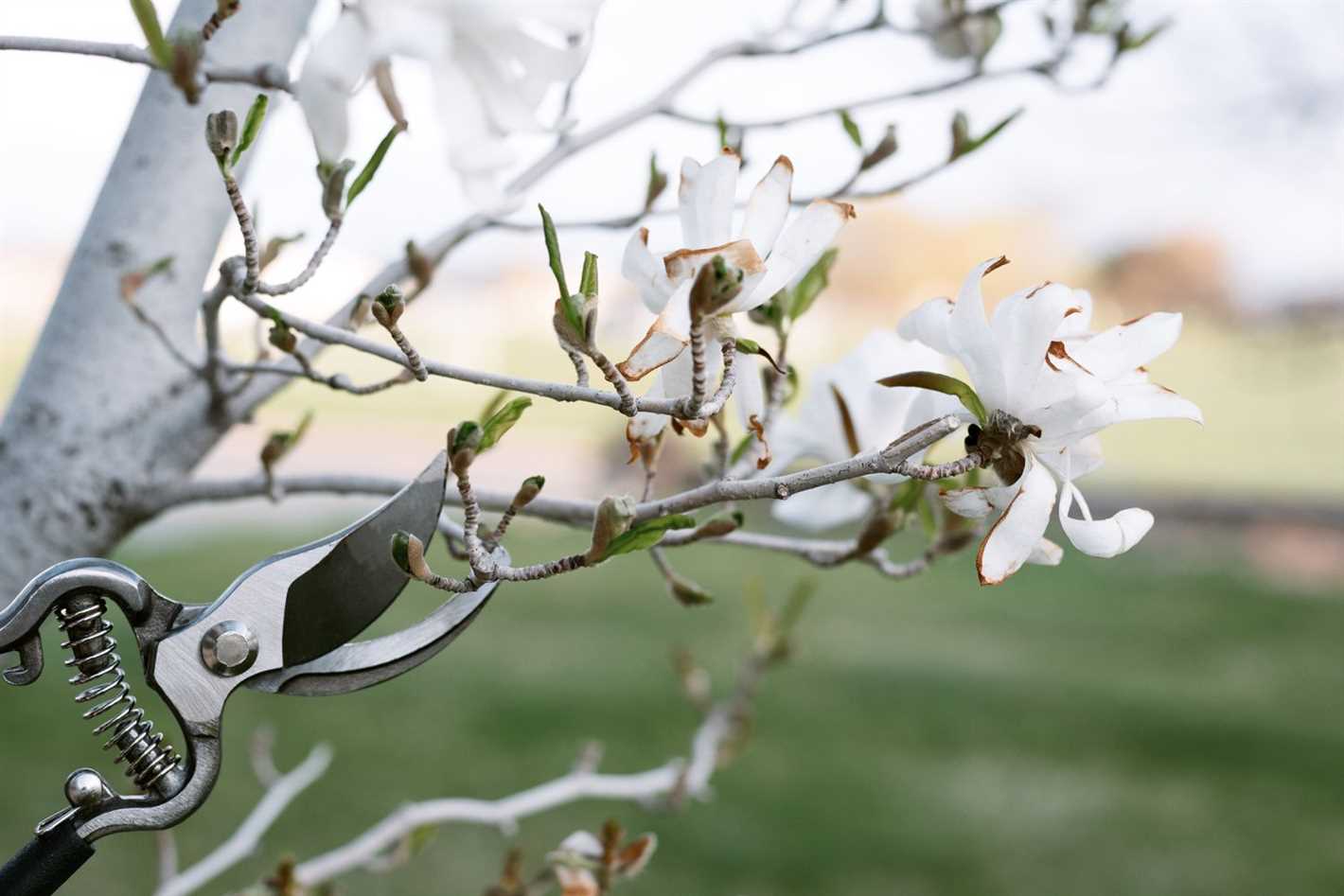
Evergreen shrubs retain their leaves throughout the year and require regular pruning to maintain their shape and health.
- Prune evergreen shrubs in early spring before new growth begins.
- Remove any dead, damaged, or diseased branches.
- Trim back long branches to maintain a compact shape.
- Prune to remove any crossing or rubbing branches.
3. Flowering Shrubs:
Flowering shrubs produce blossoms and require specific pruning techniques to maintain their blooming potential.
- Prune spring-flowering shrubs immediately after blooming.
- Remove any dead or damaged branches.
- Trim back long branches to maintain a compact shape.
- Minimal pruning in the summer to preserve next year’s blooms.
- Prune summer-flowering shrubs in late winter or early spring before new growth begins.
- Remove any dead or damaged branches.
- Trim back long branches to maintain a compact shape.
- Encourage new growth by cutting just above a bud or lateral branch.
4. Hedge Shrubs:
Hedge shrubs are usually grown for their dense foliage and require regular pruning to maintain their shape and thickness.
- Prune hedge shrubs in late spring or early summer.
- Trim the shrub to the desired height and shape.
- Prune regularly to maintain the shape and thickness of the hedge.
Remember, it’s important to follow specific pruning guidelines for each type of shrub to ensure optimal growth and health. Always use sharp, clean pruning tools and make clean cuts to minimize damage to the shrub.
Benefits of Spring Pruning
Spring pruning is an essential task for maintaining healthy and beautiful shrubs. Here are some of the benefits of pruning your bushes in the spring:
- Promotes growth: By pruning in the spring, you remove dead or damaged branches, which allows the plant to put its energy into new growth.
- Enhances blooming: Proper pruning helps to stimulate the production of flowers. By removing spent blossoms and shaping the shrub, you can encourage more prolific blooming and ensure a more attractive display.
- Controls size and shape: Regular pruning allows you to control the size and shape of your shrubs. This is especially important for shrubs that have a tendency to become overgrown or unruly.
- Improves air circulation: Pruning helps to open up the shrub, allowing for better air circulation. This can prevent the buildup of moisture and reduce the risk of fungal diseases.
- Removes diseased or pest-infested branches: Spring pruning gives you the opportunity to identify and remove any branches that may be infected with diseases or infested with pests. Removing these branches helps to prevent the spread of the problem to the rest of the plant.
- Increases sunlight penetration: Pruning can help to thin out the shrub and allow more sunlight to reach the lower branches. Improved sunlight penetration promotes overall plant health and can enhance flower and fruit production.
Spring pruning is a beneficial practice that can help your shrubs to thrive and look their best throughout the growing season. By removing dead or damaged branches, enhancing blooming, controlling size and shape, improving air circulation, removing diseased or pest-infested branches, and increasing sunlight penetration, you can ensure the health and vitality of your shrubs for years to come.
Question-answer:
When is the best time to prune shrubs in the spring?
The best time to prune shrubs in the spring is typically before new growth starts, which is usually in late winter or early spring.
How often should I prune my shrubs?
The frequency of pruning shrubs depends on the specific type of shrub and its growth habit. In general, most shrubs benefit from annual pruning, usually in the spring.
What tools do I need for spring pruning of shrubs?
You will need a few basic tools for spring pruning of shrubs, including pruning shears, loppers, and a pruning saw for thicker branches. Make sure the tools are clean and sharp to make clean cuts.
How much should I prune off my shrubs?
The amount of pruning needed for shrubs varies depending on the desired shape and size. In general, aim to remove no more than one-third of the shrub’s total growth. It’s always better to prune less rather than too much.
Why is spring pruning important for shrubs?
Spring pruning is important for shrubs for several reasons. It helps to maintain the shrub’s shape and size, promotes healthy growth, improves air circulation, and removes dead or diseased branches. It also encourages the production of flowers or fruit in certain shrub species.
Can I prune flowering shrubs in the spring?
Yes, you can prune flowering shrubs in the spring, but you need to be cautious. It’s best to prune flowering shrubs after they have finished blooming to avoid removing potential flower buds. If you are unsure, it’s always best to consult a gardening expert or refer to specific guidelines for the particular shrub species.
Is there anything I should avoid when pruning shrubs in the spring?
Yes, there are a few things to avoid when pruning shrubs in the spring. Avoid pruning too late in the season, as it can interfere with new growth. Also, avoid removing more than one-third of the shrub’s total growth, as it can stress the plant. Lastly, avoid leaving stubs or jagged cuts, as they can invite disease or pest infestation.







